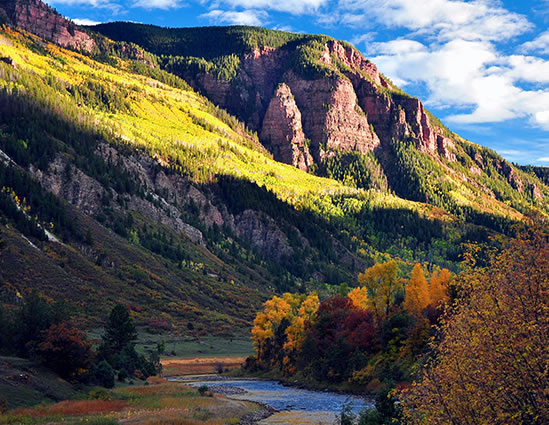The USFS found that the Crystal River is eligible for Wild and Scenic designation. The next step, a Suitability Study, will determine if:
- There is demonstrated commitment to protect the river by non-federal entities which is necessary to share responsibility for implementing protective management plans.
- Wild and Scenic Rivers designation will in fact protect the Crystal’s free flowing character and outstandingly remarkable values (ORVs).
- The free-flowing character and ORVs of the Crystal SHOULD be protected, or if there are other more important issues.
- Historical or existing rights could be impacted.
How a River Gains Wild and Scenic Status
Rivers are assessed by federal land management agencies in a multistep process:
Step 1 - Eligibility Is the river free flowing? Does it possess one or more outstandingly remarkable values (ORVs) such as scenic, recreational, geological, fish/wildlife, historical, cultural, botanical, hydrological, or paleontological? ORVs make a river unique, rare or exemplary within their region and rivers contain enough water to support those values. The Crystal River has already been deemed eligible for WSR status.
Step 2 - Suitability This collaborative process works to identify how to best protect and/or enhance ORVs through an EIS and Land Use Planning process. Stakeholders are asked to share input on the positive and negative impacts of designation.
Step 3 - Congressional Action Only congress or the Secretary of the Interior (under special circumstances) can designate a river as Wild and Scenic. This decision takes into account the two previous steps.
